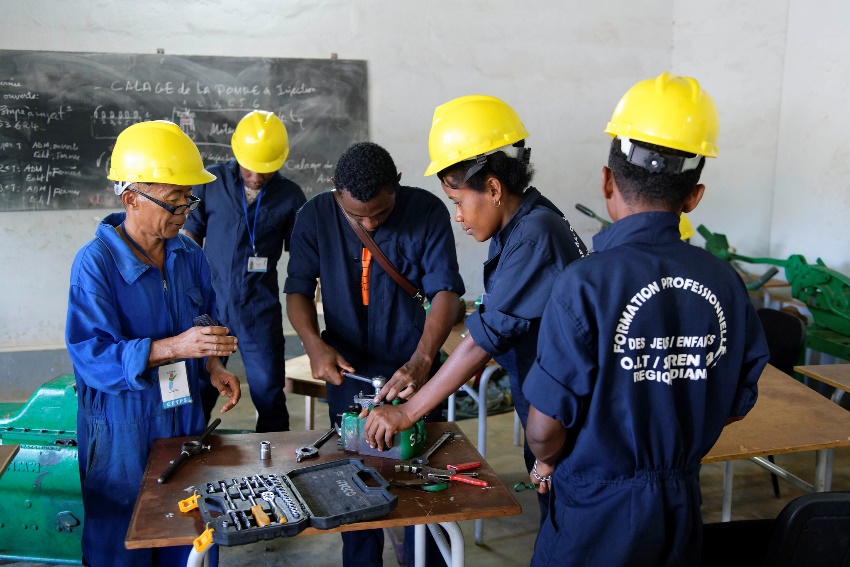Industry and Skill Wage Premiums in East Asia
English
International organizations
Information is gathered from other international organizations that promote skills development and the transition from education and training to work. The Interagency Group on Technical and Vocational Education and Training (IAG-TVET) was established in 2009 to share research findings, coordinate joint research endeavours, and improve collaboration among organizations working at the international and national levels.

Access to training

Access for all to good quality education, vocational training and workplace learning is a fundamental principle of social cohesion and economic growth. Some groups of people may require targeted attention if they are to benefit from education, training and employment opportunities.
This is particularly the case for disadvantaged youth, lower skilled workers, people with disabilities, and people in rural communities. The attractiveness of vocational education and training is enhanced when combined with entrepreneurship training and when public policies encourage utilization of higher skills by business.
Anticipating and matching skills needs

Anticipating and building skills for the future is essential to a rapidly changing labour market. This applies to changes in the types and levels of skills needed as well as in occupational and technical areas. Effective methods to anticipate future skills needs and avoid potential mismatches include: sustained dialogue between employers and trainers, coordination across government institutions, labour market information systems, employment services and performance reviews of training institutions.
Research papers
Working papers, reports, and other publications from international organizations, academic institutions and bilateral agencies. Research findings to stimulate informed debate on skills, employment and productivity issues.

This paper focuses on the estimation of skill/industry premiums and labor force composition at the national and sector levels in seven East Asian countries with the objective of providing a comprehensive analysis of trends in demand for skills in the region. The paper addresses the following questions: Are there converging or diverging trends in the region regarding the evolution of skill premiums and labor force composition? Are changes in skill premiums generalized or industry-related? How have industry premiums evolved? The analysis uses labor and household surveys going back at least 10 years. The main trends emerging from the analysis are: (a) increasing proportions of skilled/educated workers over the long run across the region; (b) generally increasing demand for skills in the region; (c) the service sector has become the most important driver of demand for skills for all countries (except Thailand); (d) countries can be broadly categorized into three groups in relation to trends and patterns of demand for skills (Indonesia, Philippines, and Thailand; Vietnam and China; and Cambodia and Mongolia); and (e) industry premiums have increased in three countries of the region (Philippines, Thailand, and Cambodia). These trends point to several policy implications, including that governments should focus on policies promoting access to education to address the increasing demand for skills and/or persistent skill shortages; support general rather than specific curricula given broad-based increases in skill premiums in most countries; better tailor curriculum design and content and pedagogical approaches to the needs of the service sector; and target some social protection programs to unskilled workers to protect them from the "unequalizing" impact of education.
Education and training
Low skilled workers
Service sector
Skills anticipation
Skills upgrading
Asia and the Pacific
